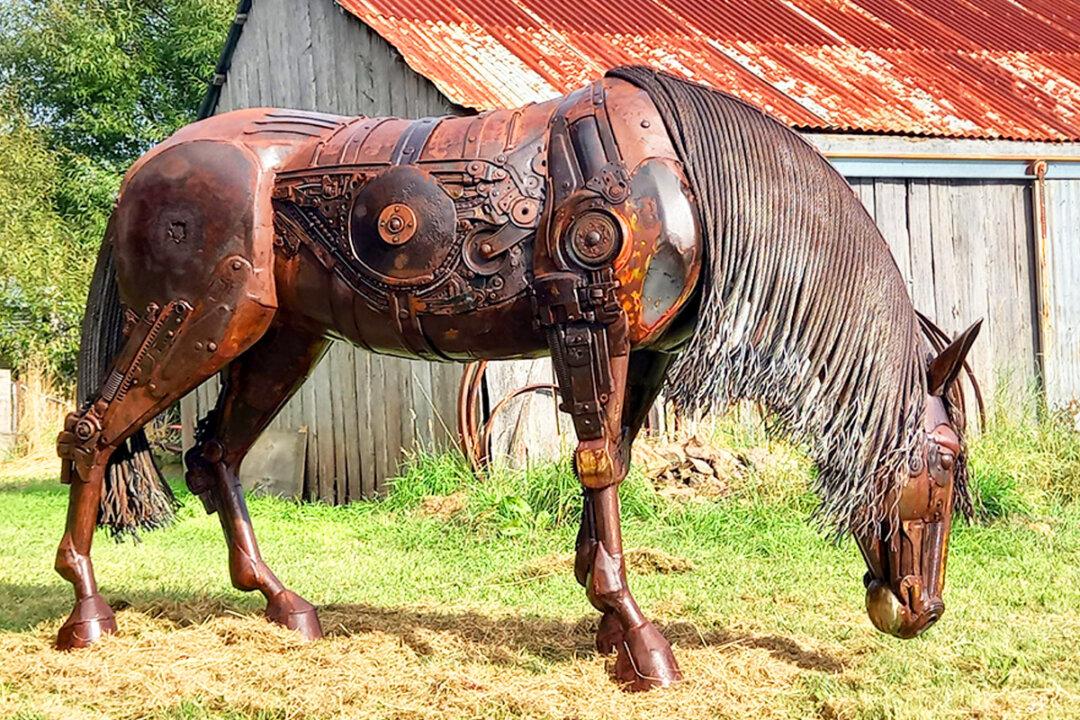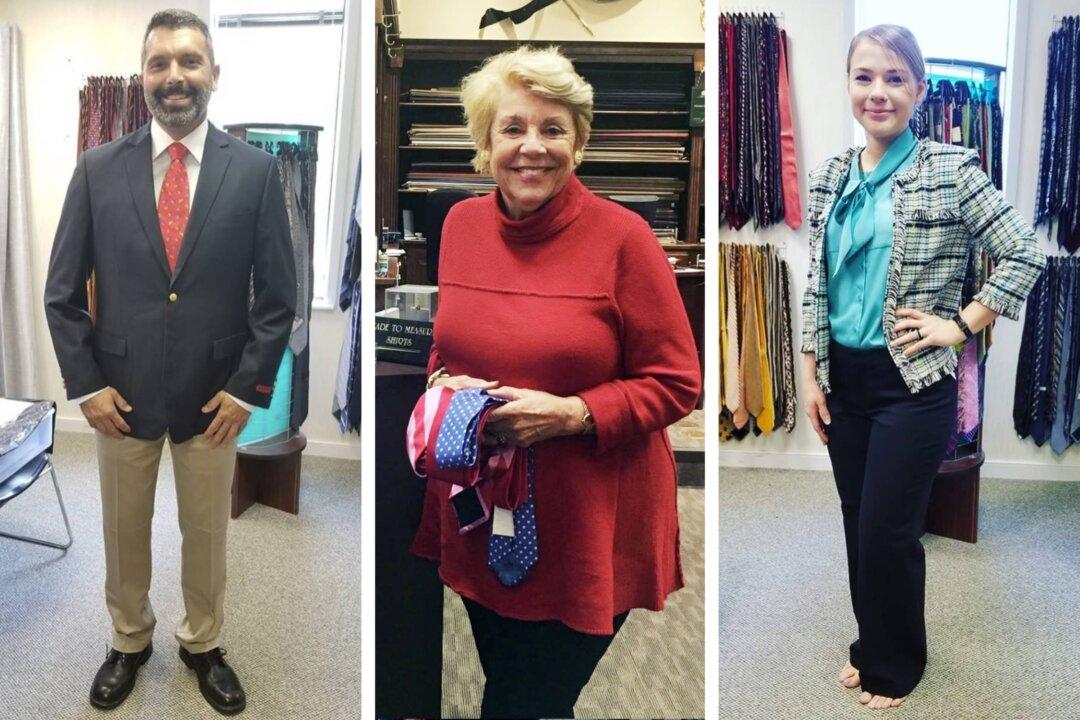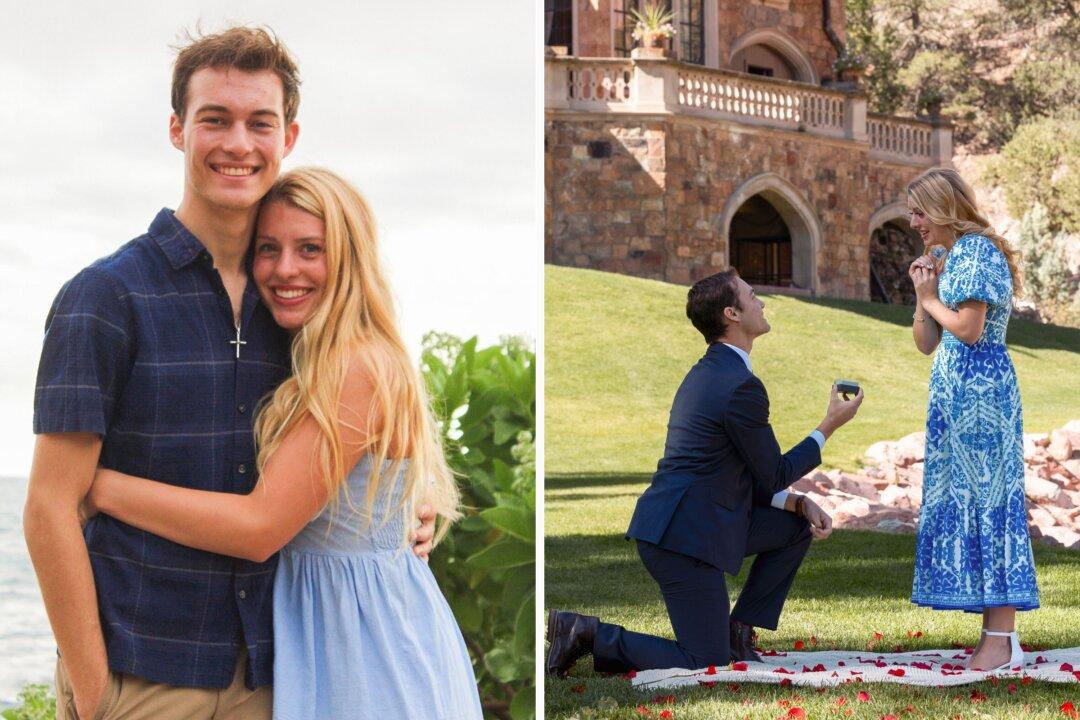A welder from Tasmania, Australia, Mr. Sloane uses scrap metal to create works of art. The talented artist specializes in creating life-size animal sculptures.
Mr. Sloane has always been passionate about art. He even attended art school for a brief period but soon realized it wasn’t for him. A decade later, he took a course at a vocational college that sparked his interest in metalwork. As part of the course, he fashioned a life-size eagle out of scrap metal. The beauty of the majestic eagle with its wings spread out left him amazed.


“I couldn’t believe myself that I'd made that eagle in the right proportions,” he told The Epoch Times, adding that it was truly “the inspirational moment” that prompted him to create even more metalwork. Instead of creating miniature or oversized animals, he decided to stick with life-size sculptures.
Mr. Sloane emphasizes that proportions are important when sculpting. He says that he “really captures the essence of the animal” when he’s working within the life-size proportions. Sticking to those proportions can make a sculpture seem more realistic “like a real animal.”





‘It’s a Huge Jigsaw Puzzle’
Although Mr. Sloane’s sculptures are life-size, each sculpture begins with a small idea. Someone will suggest that he create a new animal, for example, a cow or a bear. If Mr. Sloane is interested, he'll research the animal by studying photos, models, and even children’s toys.Then, he begins working. In sculpting, his main objective is to create the animal’s head according to proper proportions. He explains that he likes to create the essence of the animal, focusing on the face. “And then from there, I can figure out proportions for the rest of the body,” he said.
The artist uses all kinds of scrap metal: car parts, old tools, or unused farm equipment. After creating the head, he describes the rest of the process as “a huge jigsaw puzzle.” It’s a matter of finding which scrap pieces fit in which area.



The Power of Symmetry
Mr. Sloane doesn’t use many tools, aside from a few grinders. In fact, some of his tools have ended up being put to use in his art. He might be using a high-quality set of pliers given to him by a neighbor, but the pliers just happen to be the perfect piece for a new sculpture.“... I have to cut it up and put it in my sculpture,” he said. “And then I’ve got to find another one to use!”
Mr. Sloane enjoys creating symmetrical animals. Each side of an animal must match the other, and working symmetrically has proved to be the “biggest challenge” for him in his sculpting journey. “So I might find the perfect piece,” he said. “But I need to find two of them.”
Mr. Sloane’s artwork has intrigued several farmers. When they see the tools they use every day being put to use in an animal sculpture, they are fascinated. This is especially so since Mr. Sloane’s sculptures are life-like. He has also met mechanics who have said that he shouldn’t be using high-quality tools in his work. He remarks that such comments have made him laugh. If a high-quality tool is the right fit for a sculpture, Mr. Sloane says, he will make good use of it in his artwork.



The Hard Work
Sculpting metal animals can be an intensive process, and each piece takes a long time to create. Larger pieces can take up to five months, while smaller ones can take as little as six weeks. Mr. Sloane pours time and effort into each of his creations. Obviously, the passionate welder uses a considerable amount of scrap metal in his work. When asked where he sources this metal from, he had a simple answer: everywhere.Mr. Sloane explains that Tasmania’s local governments hold “hard rubbish days” several times a year when residents put large trash, such as old furniture or appliances, on the street to be collected and disposed of. On these days, he drives around looking for materials to salvage and use in his artworks. Sometimes, people reach out personally to offer him their scrap metal. He is also contacted by mechanics and farmers, offering old tools and farm equipment.
Some people have even offered special items like tools belonging to a deceased relative.
“They’d like to see it go into artwork,” he said, instead of being thrown out. “So yeah, I get contacted a lot now. I’ve got a good pile of scrap in my backyard.”


Due to the time-consuming nature of his work, Mr. Sloane has experienced some financial struggles. Still, he sells enough work to create art full-time, his sculptures are in demand, and he thoroughly enjoys what he does.
Mr. Sloane’s favorite subjects to sculpt include dogs, horses, and pets. He has even created sculptures for people who have experienced the death of a pet. Such sculptures are very special, he says. He experiences “the best feeling” when a pet owner remarks on how closely his sculpture matches their beloved pet.
He’s created a vast array of sculptures, including platypuses and wombats. Many of his pieces are inspired by Tasmanian wildlife. Mr. Sloane has received much praise from those who work with animals since his pieces are so realistic. He regards such compliments as the highest form of praise.


‘What You Throw Away Can Be Useful’
Social media has been a driving factor in Mr. Sloane’s success. His Instagram page displays many of his pieces—everything from echidnas to ducks. People are naturally intrigued by the metal sculptures.Mr. Sloane describes the current era as being an “exciting time for artists” since social media can spread their reach. Although Sloane lives on the small island of Tasmania, his work has been sold to places as far away as the United States. He explains that 10 to 15 years ago, these sales wouldn’t have been possible.
Talking about possible meanings behind his art, he says the sculptures show that “what you throw away can be useful.” All sorts of metal trash has been put to use in his art. Where someone may see an old hammer or a broken car part, Mr. Sloane sees a work of art in the making.
He knows that he’s privileged to pursue his passion full-time, and he encourages aspiring business owners and artists to follow their dreams.
“I’m really stoked that people enjoy my artwork,” he said. “I wouldn’t have thought that I'd get to this position like six years ago. If there’s something you’ve been wanting to do for years, just take the time and do it.”








